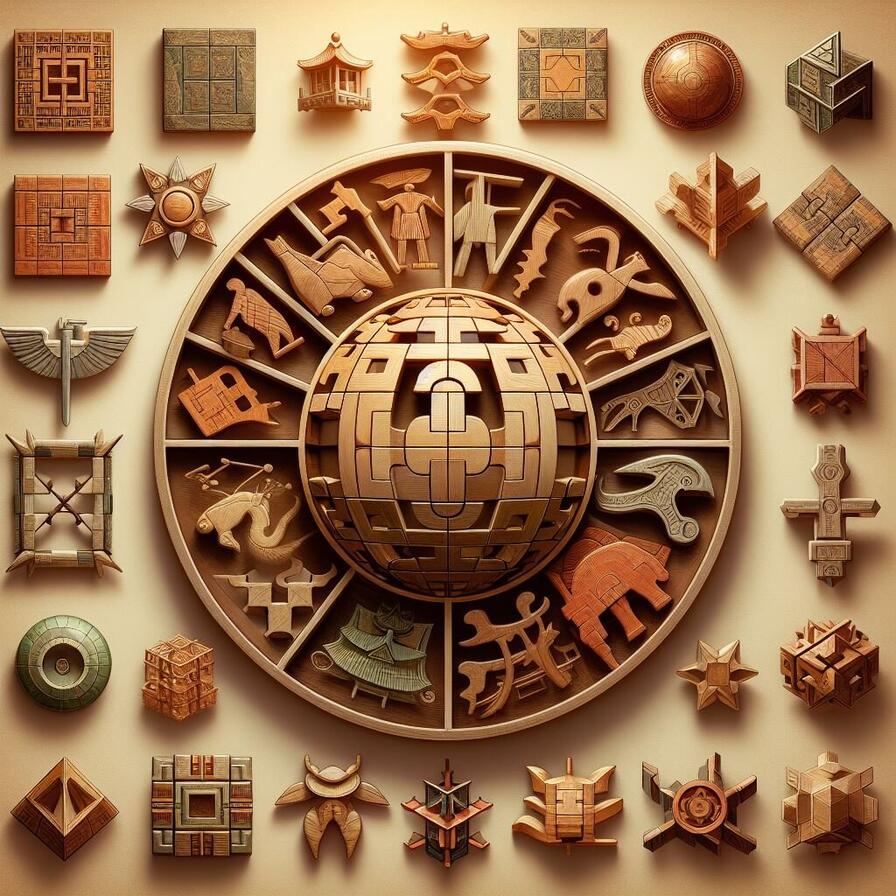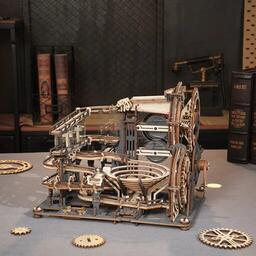
Welcome to the fascinating world of 3D wooden puzzles! From its humble beginnings to the present day, this article will introduce you to the story of how these puzzles evolved from a simple wooden puzzle method of playing to a true artistic marvel. The history of 3D wooden puzzles goes back to ancient times when they were used for educational purposes. However, remarkable advances in technology and design have resulted in modern 3D wooden puzzles that can mimic real buildings, landmarks, and even famous paintings. These wooden puzzles are not only fun, but also a wonderful way to display art that has caught the attention of the general public. Their unique combination of traditional craftsmanship and modern technologies brought a new dimension to the assembly of wooden parts. The article "The History of 3D Wooden Jigsaw Puzzles: From the Beginning to the Present" will detail the development of these jigsaw puzzles and their important role in entertainment and education. So join us and discover the fascinating world of 3D wooden puzzles!
Introduction to 3D wooden puzzles
Jigsaw puzzles have a rich history that dates back to ancient times. Their origin is connected with education and training of the mind. The first known jigsaw puzzles were made of paper or wood and were intended to teach children to recognize shapes, colors and patterns. These simple puzzles usually only had a few large pieces to fit together. Jigsaw puzzles were also popular as board games for adults that helped develop thinking and logical skills. Puzzles gradually evolved and became more complex. In the 18th and 19th centuries, wooden puzzles with several small parts that had to fit together exactly began to be produced. These puzzles became popular in Europe and America. In the 19th century, jigsaw puzzles with ornate pictures also began to be produced, which added an aesthetic element to their fun.
The origin of jigsaw puzzles
The concept of puzzles dates back to ancient Greece and Egypt, with the labyrinth being one of the earliest forms of puzzles. Around 1000 BC, Chinese puzzle objects began to circulate, serving both as fun problem-solving tools and as philosophical explorations of the patterns and systems of the universe.
The first 3D puzzles were born from the Asian tradition. The Japanese invented the Kumiki puzzle, one of the first 3D interlocking puzzles that took on the shapes of animals and other objects. Other interlocking puzzles that grew out of the Kumiki tradition include the Burr and Chuck puzzles, both challenging wooden puzzles that form artistic geometric shapes.
In 1989, there was a significant advance in the world of 3D puzzles. Paul Gallant, an amateur French-Canadian inventor, made the first 3D jigsaw puzzles with cutouts from polyethylene foam covered with painted paper. The foam pieces were light enough and bonded together strong enough to support tall buildings and accurate models of medieval castles, alpine villages, and hundreds of other creations.
With the development of industry and technology, wooden puzzles have become more and more accessible and popular. In the 20th century, new production methods appeared, which made it possible to produce jigsaw puzzles more accurately and with greater variability. Improvements in the manufacturing process also made it possible to create more complex and challenging puzzles that tested players' patience and problem-solving skills. Over time, wooden puzzles have become not only games, but also works of art. Many artists and designers began to create original and unique puzzles that had aesthetic value. Wooden puzzles became objects of collections and were exhibited in exhibition galleries. This development opened the way for the creation of 3D wooden puzzles.
The development of wooden puzzles
In recent decades, 3D wooden puzzles have appeared, bringing a whole new dimension to the world of puzzles. These puzzles allow you to create realistic 3D models of buildings, monuments and works of art. Advances in technology and design have made these puzzles more accurate and detailed than ever before. 3D wooden puzzles are made of quality wood and contain multiple parts that must fit together correctly to create a 3D model. These puzzles are both a challenge for players and a wonderful way to create your own work of art. They are ideal for those who are interested in architecture, history or simply like to spend time creating something beautiful.
Advantages of 3D wooden puzzles
3D wooden puzzles have many advantages over traditional puzzles. One of the main advantages is their aesthetic value. Creating 3D models from wood is not only fun, but also allows you to create unique works of art that you can have as decoration at home. These puzzles are also a great way to pass the time and relax. In addition to aesthetic benefits, 3D wooden puzzles also have educational benefits. When the player concentrates on putting together a puzzle, he develops his logical thinking, spatial imagination and patience. He can also learn more about history and architecture as he puts together puzzles of buildings and monuments.
Different types of 3D wooden puzzles
There are many different types of 3D wooden puzzles that you can choose according to your interests and preferences. Some of these types include buildings, landmarks, animals and nature puzzles. Each type offers a unique experience and challenge for the player. Building and monument jigsaw puzzles are very popular because they allow you to create accurate models of famous buildings and monuments. These puzzles are a great way to learn more about the history and architecture of these cities. Animal and nature puzzles are ideal for those who love nature and want to create wooden models of animals and plants.
Tips and tricks for successfully building 3D wooden puzzles
Solving 3D wooden puzzles requires patience, skill and logical thinking. Here are some tips to deal with these puzzles:
1. Start with simpler puzzles and gradually improve. This will allow you to gain experience and get better at solving more complex models.
2. Read the manual carefully and follow the instructions carefully. Most 3D wooden puzzles have detailed instructions to help you build the model step by step.
3. Be patient. Some puzzles may be more challenging and require more time and effort. Do not despair and continue with the solution.
4. Work in a clean and well-lit environment. This will help you keep track and make working with small parts easier.
Conclusion
3D wooden puzzles have a rich history and their development is still in full swing. These puzzles are not only fun, but also works of art that can depict the world around us. It is fascinating to see how simple wooden puzzles have become real art. The future of 3D wooden puzzles is full of possibilities and innovations, and we can look forward to what the next few years will bring. If you want to immerse yourself in this fascinating world, don't hesitate and start assembling your own 3D wooden puzzle today!












